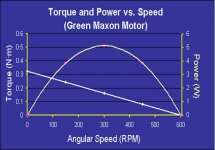thataway
Well-known member
- Joined
- Nov 2, 2003
- Messages
- 21,692
- Reaction score
- 63
- C Dory Year
- 2007
- C Dory Model
- 25 Cruiser
- Hull Identification Number
- DOR25652A707
- Vessel Name
- thataway
Greg,
Yes, that is the link to what I refer to as the Sydney experiment, where the quote is
They are getting 4 amps (what the unit is internally fused for) at 30 volts. Also the 30 volts is above the 29.5 volts which the battery is rated at rest. This way, there is more of a voltage gradient. If you had 24 volts limited at 85 watts, then you would be fine.(96 is the limit at 4 amps). Or if you had 30 volts, then you could go to the full 120 watts. They are probably by passing whatever DC to DC step up circuit which is in the battery compartment at the higher voltage. The assumption is that there is a voltage sensor, and that shunts the current to the battery, or sends it thru a converter to step the DC up to over 29.5 volts.
You could even use the Torqeedo as a "Stern thruster" in the C Dory--maybe even some of those trick maneuvers with the "pods"… I did notice with the Torqeedo on the cat that the thrust was instant--different than an outboard. 4% is a very low amount--and I suspect would be a good number of an average shore trip in the dinghy...
Yes, that is the link to what I refer to as the Sydney experiment, where the quote is
"The nice thing about this solar charge channel is that its working at around 30 volts and if we have enough solar panels, the power that we can get into the battery at 4 amps is 120 watts. This turns out to be around three times greater than the plug-in charger that comes with this battery. "
They are getting 4 amps (what the unit is internally fused for) at 30 volts. Also the 30 volts is above the 29.5 volts which the battery is rated at rest. This way, there is more of a voltage gradient. If you had 24 volts limited at 85 watts, then you would be fine.(96 is the limit at 4 amps). Or if you had 30 volts, then you could go to the full 120 watts. They are probably by passing whatever DC to DC step up circuit which is in the battery compartment at the higher voltage. The assumption is that there is a voltage sensor, and that shunts the current to the battery, or sends it thru a converter to step the DC up to over 29.5 volts.
You could even use the Torqeedo as a "Stern thruster" in the C Dory--maybe even some of those trick maneuvers with the "pods"… I did notice with the Torqeedo on the cat that the thrust was instant--different than an outboard. 4% is a very low amount--and I suspect would be a good number of an average shore trip in the dinghy...

